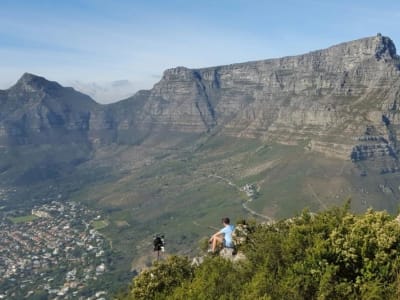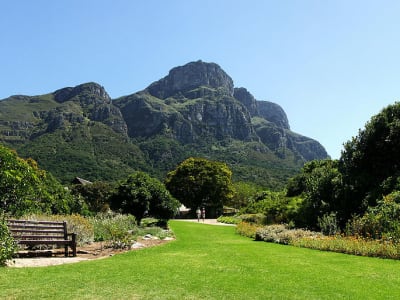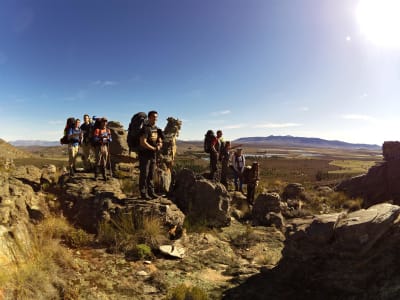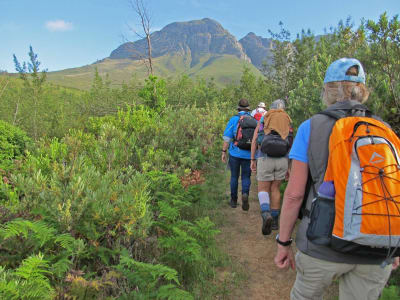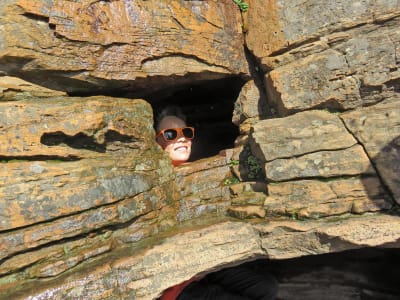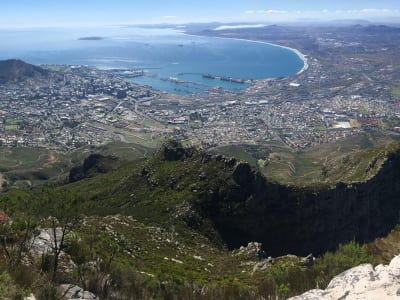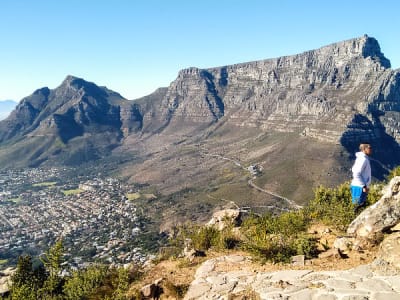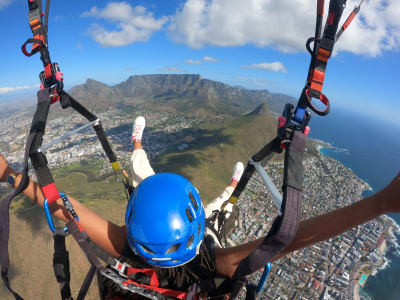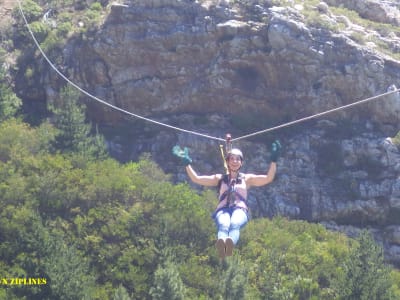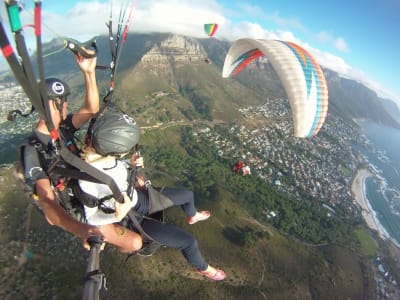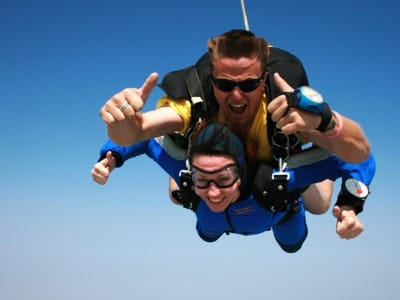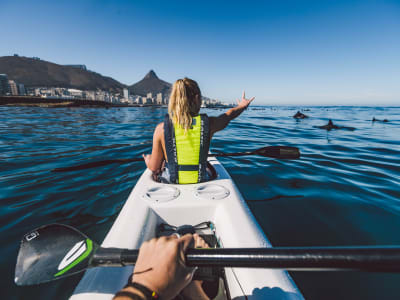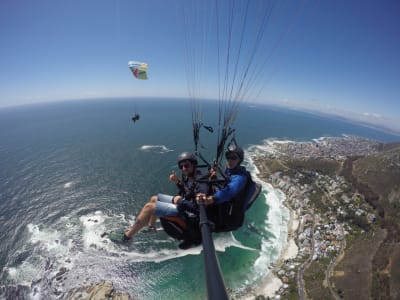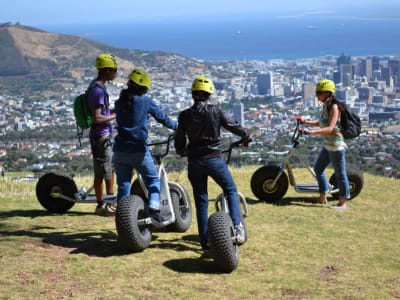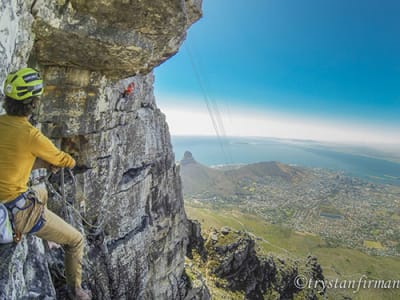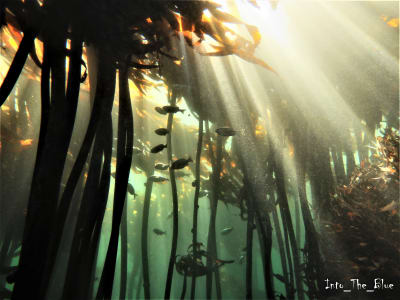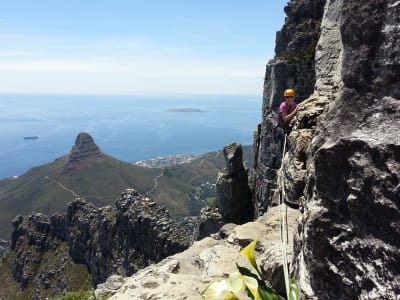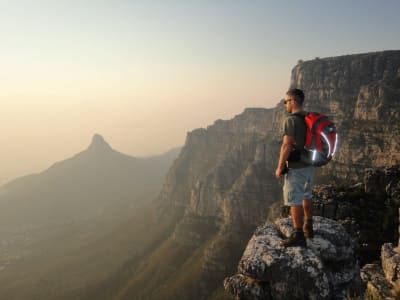
Explore the renowned Paarl Mountain Reserve with this 4-5 hour hiking excursion.
The Meulwater Wild Flower Reserve has an impressive diversity of about 68 indigenous plants in a condensed area of 9 hectare. You can only appreciate the size of these huge granite domes (estimated to be about 530 million years old) by climbing them and walking around them.
They have been compared in majesty to Uluru (also known as Ayers Rock) in Australia however, they are not geologically similar. Paarl Rock is granite, while Uluru is sandstone.
Route Description
The tour starts with a walk through the Meulwater Wild Flower Reserve where visitors can get a sense of the impressive variety of plants in Paarl Nature Reserve.
After a visit to the Wild Flower Garden we cross the Meulwater picnic area to ascend Paarl Rock (543m /1781ft). Here you'll visit the historical old cannon and explore the top of Paarl rock.
You'll continue the hike and walk to Gordon and Bretagne Rocks. You can access the top of Bretagne Rock (649m/2129ft) with the help of a chain walkway. On a clear day you're rewarded with astounding views from the survey Beacon on Bretagne Rock of the Drankenstein Valley, False Bay and Table Mountain and as far as Riebeeck-Kasteel Mountain!
You'll then descend and walk with another boardwalk made from recycled plastic through an indigenous forest. A total of 4071kg recycled plastic was used to produce these boards.
You'll follow the footpath between the domes and carry onto Christmas Camp for a well-deserved rest under the old wild olive trees. From here you'll walk back to the start of the hike via Nantes dam.
Altitude start: 427m (14001ft)
Highest point reached: 649m (2129ft) above sea level
Distance: approx. 7 km
Rating: Moderate
Time: Between 4-5 hours
Book your activity
Practical information
Please avoid cotton as it soaks up moisture, clings to the skin when wet, doesn’t insulate and takes longer to dry. You end up feeling uncomfortable, with a wet and sweaty layer of clothing.
Advice on what to wear:
The weather on the mountains can change unexpectedly and sudden drops in temperature are common. On a hot day the correct clothing can help prevent heat exhaustion and sunburn. Wearing the wrong clothes on your hiking/walking tour could spoil your tour.
Examples and good choices of clothing:
Top:
1st layer: A sleeveless or short sleeve T-shirt/top of light-weight moisture wicking fabric.
2nd layer: A long sleeve shirt with a collar (for protection against sunburn) from light weight moisture wicking fabric. When the temperature increases you can take the shirt off. When it gets cold or sun protection is needed you can put the shirt back on.
3rd layer: A body warmer is a practical choice for the tour (a sleeveless vest that zips up in front, designed to offer warmth and protection to your core, also known as a gilet). Choose one that is light, folds up small and can serve as a wind breaker and can add extra warmth when needed.
4th layer is for protection against rain and cold: Bring light weight jacket that is completely windproof, waterproof, breathable and can keep you warm and dry, preferably with a hood.
Trousers: Full length zip-off pants. Protects the skin form insects, thorn and blister bushes (similar to poison Ivy) and sunburn. The pants could be converted into shorts at any stage and vice versa.
Hands: Gloves for the cold. If no gloves are available bring an extra pair of socks to put over your hands.
Feet: The correct footwear is most important
Socks: Breathable, wick moisture away from the skin and are quick drying.
Shoes: Everyone’s feet are different. Make your footwear choices according to what is right for you. Good choices are: hiking boots, low-cut hiking shoes or trail running shoes.
Head: Wide brimmed hats have excellent coverage. A cap or visor with a bandana for neck protection is also a good combination. Sunglasses, a beanie or buff in backpack in the event of weather changes.
Backpack: 25 – 30 litres for carrying personal items and your snack/lunch pack. If you do not have a day pack please notify us in advance.
Sun block: at least factor 30; the sunburn danger in Cape Town is high, even on a cloudy day.
Personal first aid e.g. personal medication. sticking plaster, headache tablets. If you have health problem asthma, diabetes or heart problems please inform the guide in advance. If you start getting a blister on your feet on the hike inform the guide so that it can be treated immediately.
- Expert guide
- Bottled water
- Comfortable clothes adapted to the weather conditions
- Sunscreen and sunglasses
- Closed shoes adapted to hiking
- Snacks











